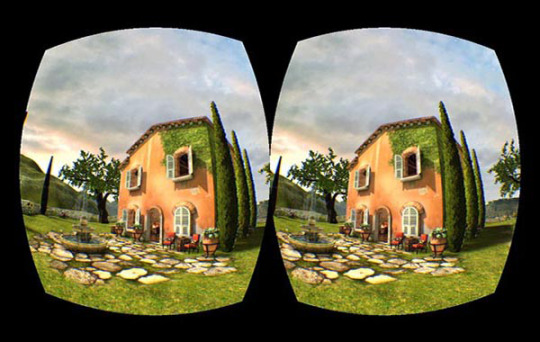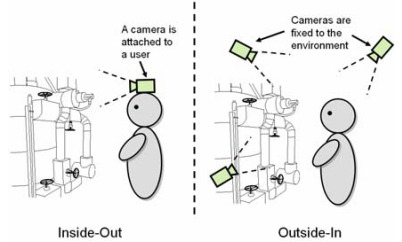#daretoescapereality
Text
Q&A Intro to VR
A while ago, an old friend introduced me to some students doing a science project who asked me some questions about VR. They were kind of introductory questions, but I’m sure lots of people out there don’t know much about VR yet; so I decided to post my response.
“
Intro
Hey there future VR developers and creators!
My name is Alvin, and I've been working with VR and AR technology for about 5 years now. I recently graduated Fall of 2017 from UCLA with B.S. in Computer Science and a minor in Cognitive Science.
Just after graduating high school (wayyyy back in 2013), I remember getting the first Oculus Rift DK1 in the mail and setting it up. Even though it was a prototype, it was absolutely mind-blowing. I remember putting it on and being INSIDE Minecraft.
After that, I made it one of my goals to keep up-to-date with the industry and so while in college, I made a bunch of random VR and AR projects for hackathons. These include:
AR search - https://devpost.com/software/findar
VR walking - https://devpost.com/software/m-o-l-m
VR dodgeball - https://devpost.com/software/dodgelodge
These projects allowed me to learn a lot about how to make things for VR, and eventually landed me a research position at UCLA, under two psychology professors who studied human memory and human perception.
They wanted to study the human brain with the help of VR. So I built experiments using VR as a tool to put people into virtual worlds so that we can see how the brain reacts in certain conditions.
After two years of this, I was pretty set to go to graduate school, but those plans changed very quickly. A couple of my friends and I were getting odd jobs to develop VR projects for other people, and we were getting paid too!
So, instead of going to grad school, I and my team of friends started a company, called Escality (clever combination of ‘Escape Reality’), and now we make our own VR/AR games and also other applications for clients!
Here's the trailer for our first VR game on Steam!
Youtube: https://www.youtube.com/watch?v=PhzONE7-NQ0
Steam: https://store.steampowered.com/app/805320/Conjurors_Eye/
Okay enough about me, let's talk about VR!
Answers to Questions
How does VR work?
If you haven’t tried VR yet, you have to do that first. Find any way you can. It will blow your mind. And it'll be a good first step to understanding how it all works.
This video comes close to capturing what VR is like: https://www.youtube.com/watch?v=jNjmmLLBGHs, but seriously you need to try it for yourself.
Alright, after that, let's dive in:
A lot of things come together to make VR work, but the main two are:
Displays and Tracking
For displays, VR headsets are just screens (like your phone screen or your computer screen) with a bunch of fancy sensors.
But for these screens to make it feel like you're somewhere else, they have to show two images (one for each eye) that are slightly different. This is what's called a stereoscopic display (stereoscopic, meaning two views).

For tracking, well, it depends on the headset. But there's two main types of VR tracking technology: lighthouse (or outside-in tracking) and inside-out tracking.
Here's a good illustration of the difference:

With inside-out tracking, the headset on the player has cameras and fancy sensors (like accelerometers, the kind of sensors used in phones to tell if they're upside down or not). The cameras and sensors work to understand the world around the player and make really good guesses to how the person is oriented.
With outside-in tracking, separate tracking cameras are placed around the room and look for certain markers on the player and/or headset to make a good guess as to where the person is and how they are oriented.
If you want to read more about this, here's a good article: https://www.wareable.com/vr/inside-out-vs-outside-in-vr-tracking-343
When you combine high quality stereoscopic displays with good and fast tracking, you can put that on someone's face, and they'll feel like they're somewhere else! That's VR!
How much money does it take to manufacture a VR headset?
The answer to this question is like the last one. It depends.
For example, let's take the Oculus Rift. It is currently being sold at $400, (released for $600). According to this article, it costs $206 for the parts, not including the labor put into putting it all together.
But if you look at other headsets, like the Pimax, it's being sold at $1000. There's no source for how much that one costs to make (probably a lot more).
How could you transfer VR files to space?
VR files are just regular computer files. If you've ever played a game on your computer, VR is the same thing! A VR game is just another computer game!
The main difference between VR and regular games is in the display (two images instead of one big one) and the tracking (using sensors and cameras to figure out where you're looking / how you're tilting your head).
How are VR movies made?
There are two types of VR environments: VR capture (taking the real world and putting it in VR) and completely virtual environments (building worlds from scratch in VR)VR capture techniques vary widely and usually involves taking a bunch of pictures of the world and mixing/matching them to form a sphere. Then based on where you're looking, you'll see a part of that sphere.
Here's a good article about how VR capture is done: https://www.viar360.com/blog/types-of-virtual-reality-capture-methods-that-allow-you-to-replicate-the-real-world/
For completely virtual environments, these are usually built in a game engine editor like Unity or Unreal Engine. 3D modeling is done to create virtual assets, then animation and VFX tools are used to make them move and look as if they're alive.
Popular 3D modelling software programs include: Blender, Maya, 3DS Max, and many more.
What supplies are needed to film a VR movie?
Assuming you're doing VR capture (taking the real world and putting it in VR), usually you'll need some kind of 360 degree camera. You can refer to the previous answer's link to that one article. Searching up each method for VR capture will give you an idea of what is needed for each technique.
Otherwise, if you're building completely virtual environments, all you need is a computer with a game engine downloaded (Unity and Unreal are the most popular and easiest to learn).
How much does the equipment cost to make a VR movie?
That highly depends on the technique used.
For simple 360 videos, all you would need is a 360 degree camera which costs anywhere between $100 to a couple thousand dollars depending on the quality of video that you want.
For more advanced techniques like photogrammetry and light-field capture, setups can run up to many thousands of dollars.
If you want to create completely virtual worlds, though, that's usually completely free! With software like Unity and Unreal, as well as Blender, you can create entire virtual worlds at zero cost. But it's a lot of work.
How are VR files stored or sent?
Again, VR files are just regular computer files. You can download a game from the internet, the same way you can download a VR game from the internet.
Will the VR video be clear even though they are heavily compressed?
Video files can be encoded at whatever quality you want them to be. They can be 1080p, or they can be 100000000 x 1000000000 resolution. That's up to you.
Whether or not your computer can run something that's 100000000 x 1000000000 is a separate issue (most regular computers today will have trouble even playing things at 4K).
Also VR headsets don't go that high.The HTC Vive Pro has a screen resolution of 2880 x 1600 (1400 x 1600 per eye).
The Oculus Rift has a screen resolution of 2160 x 1200.
The Pimax has a screen resolution of 2 * (3840 x 2160).
When you put a VR headset on, resolution isn't as important as refresh rate (the speed the screen updates per second). Research suggests that 90 Hz screens are optimal for VR use.
That means the screen has to update 90 times every second in order to feel good. Tracking also matters a lot, because with bad tracking, people can get nauseous and motion sick.
As for the video being clear, just make sure the resolution of the video matches the one that your headset supports. If you're using a HTC Vive Pro, make sure it's 2880 x 1600 (1400 x 1600 per eye), etc.
How do you incorporate sound into VR?
Most modern VR headsets have speakers for both the left and right ear. Spatial audio files exist that have data on how loud something is in your left ear vs. your right ear depending on where you're facing.
These types of files are called ambisonic audio files. Youtube supports First Order Ambisonics, and you can also read about this file type here: https://en.wikipedia.org/wiki/Ambisonic_data_exchange_formats#File_formats_and_metadata
VR games do this by default through the game engine code. So, when you play a game in VR made in Unity or Unreal for example, the sound will automatically be built-in and spatial, so that something on your left in VR will actually sound like it's on your left, etc.
Alright! That's all of the questions answered! Good luck on your project! Don't be afraid to ask some more!
”
0 notes